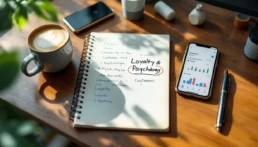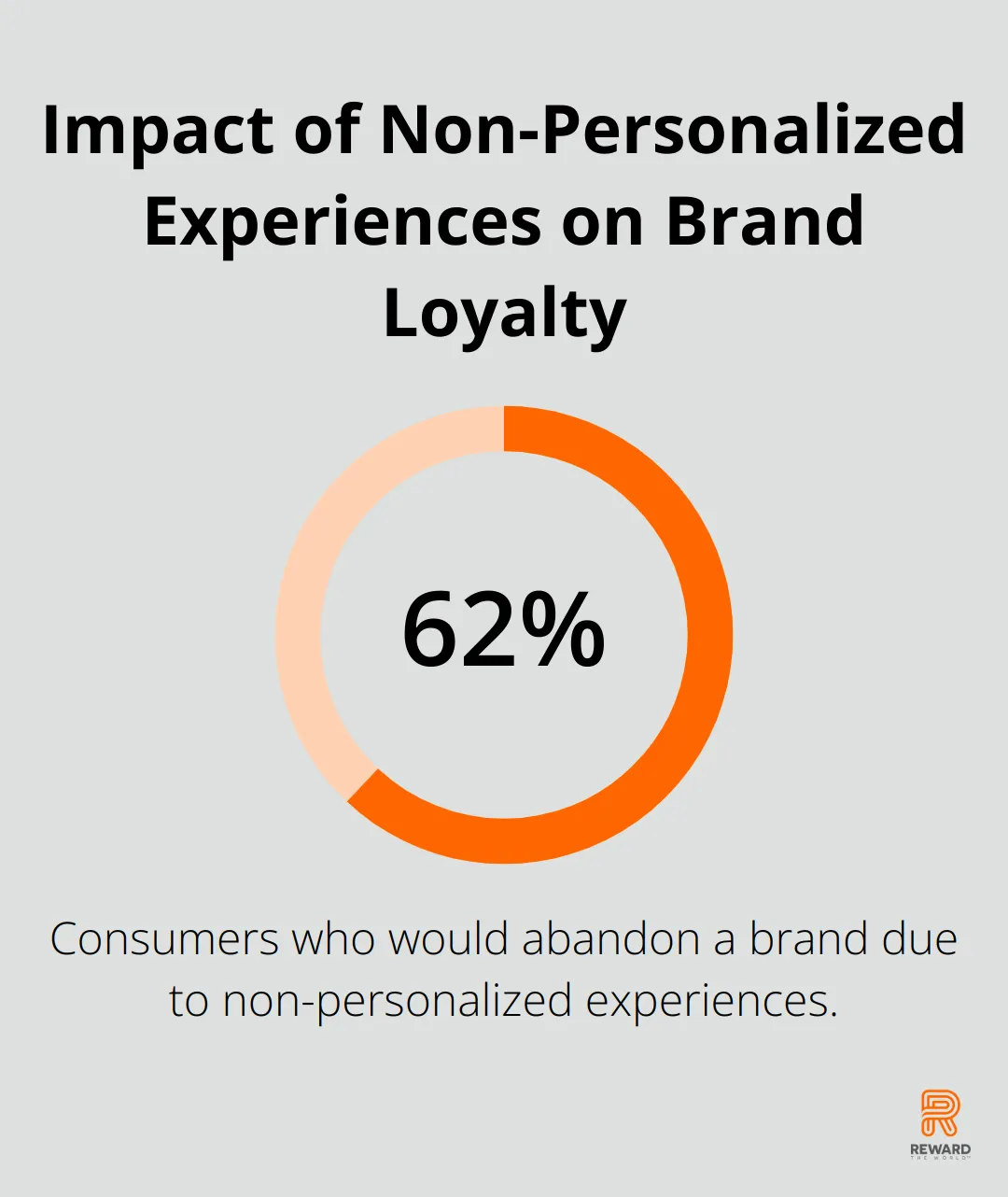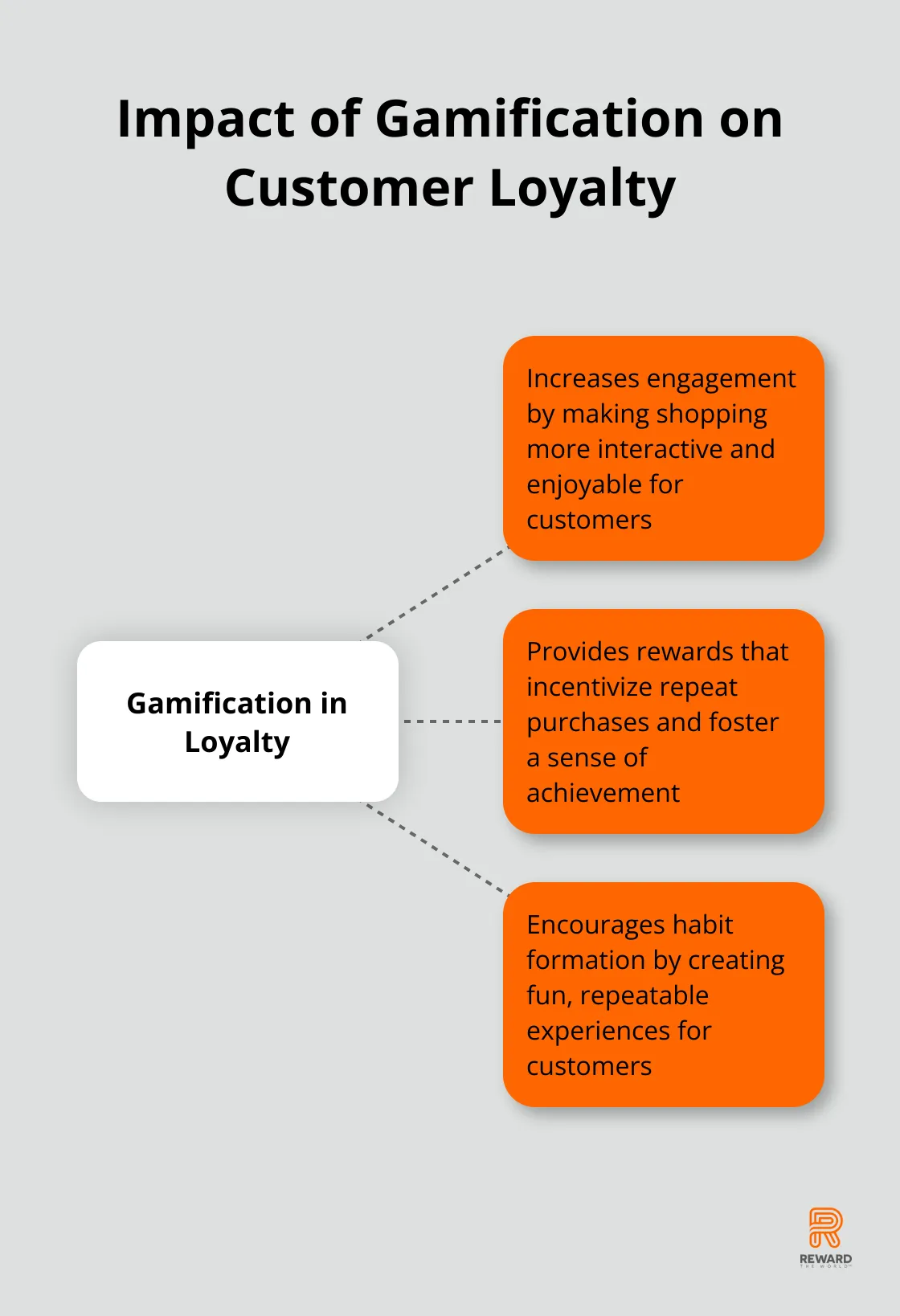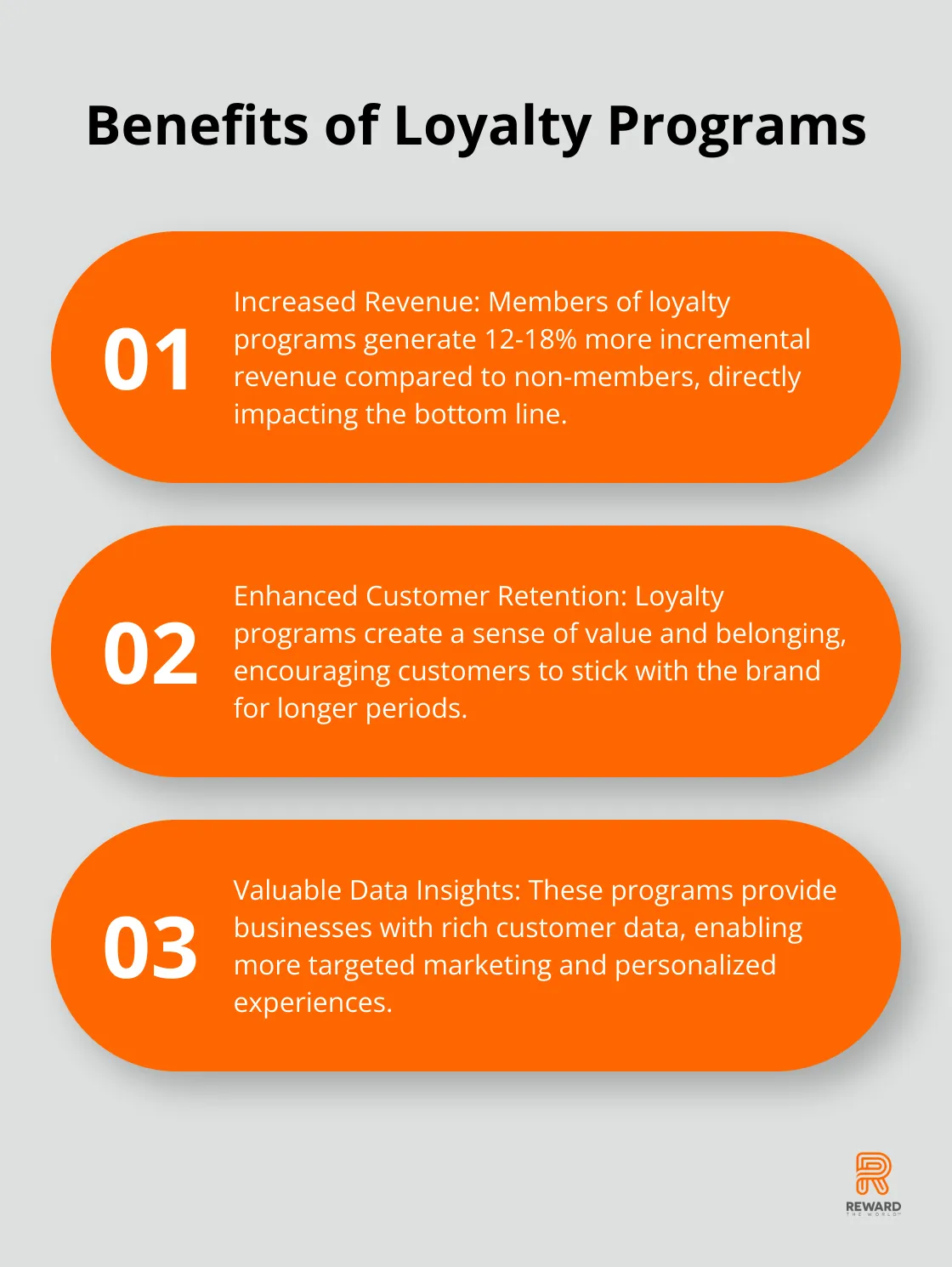
Customer loyalty isn’t just about points and perks. It’s deeply rooted in human psychology.
At Reward the World, we’ve seen firsthand how understanding customer behavior can transform loyalty programs. Behavioral rewards tap into the core motivations that drive customer decisions and foster long-term brand relationships.
This post explores the psychological principles behind successful loyalty strategies and offers practical tips to implement them effectively.
What Drives Customer Loyalty?
Customer loyalty isn’t just about repeat purchases. It’s a complex psychological phenomenon that businesses must understand to create lasting relationships. At its core, loyalty stems from positive emotions and experiences associated with a brand.
The Power of Emotional Connections
Emotional connections form the bedrock of customer loyalty. When customers feel a strong affinity towards a brand, they stick around. According to Dobrev, “Emotional connection creates preference over the competition. Customers don’t just come back out of convenience. They see a difference…”
To foster these connections, brands need to align with their customers’ values and aspirations. Outdoor clothing company Patagonia has built a fiercely loyal customer base by championing environmental causes. This resonates deeply with their environmentally conscious audience, creating a bond that goes beyond product quality.
Reciprocity: Give and You Shall Receive
The principle of reciprocity drives loyalty powerfully. When customers receive something of value, they feel compelled to reciprocate. This is where reward programs come into play.
Providing customers with value can be leveraged in retention strategies. The key is to offer rewards that are meaningful and relevant to your specific customer base.
Reward the World’s platform allows businesses to offer a wide range of rewards (from eGift cards to cash payments), ensuring that every customer finds something valuable.
The Role of Habit Formation
Habit formation plays a critical role in long-term loyalty. When customers repeatedly engage with a brand, it becomes part of their routine. A study in the European Journal of Social Psychology found that it takes an average of 66 days for a new behavior to become automatic.
To encourage habit formation, businesses should focus on creating seamless, enjoyable experiences that customers want to repeat. Amazon’s one-click ordering exemplifies this. By removing friction from the purchasing process, they’ve made it incredibly easy for customers to keep coming back.
Personalization: The Key to Relevance
Personalization has become a cornerstone of effective loyalty strategies. Customers expect brands to understand their preferences and tailor experiences accordingly. According to a Statista report, 62 percent of consumers stated that a brand would lose their loyalty if it delivered a non-personalized experience.

Businesses can leverage data analytics to gain insights into customer behavior and preferences. This information allows for the creation of targeted offers and communications that resonate with individual customers.
The Next Step: Applying Psychological Insights
Understanding these psychological principles lays the foundation for a successful loyalty strategy. The next section will explore practical ways to leverage these insights in your loyalty programs, turning theory into action.
How to Leverage Psychology in Loyalty Programs
Effective loyalty programs tap into the core of human psychology. Understanding and applying psychological principles can supercharge customer engagement. Let’s explore key strategies that harness the power of the human mind to create loyalty programs that truly resonate.
The Power of Personalization
Personalization can have a positive impact on customer loyalty and retention. Personalized experiences can increase customer engagement, which extends beyond using a customer’s name in an email. It involves tailoring every interaction based on preferences, purchase history, and behavior.
Netflix’s recommendation engine exemplifies personalization. It analyzes viewing habits to suggest content that keeps users engaged for hours. In the loyalty space, this translates to offering rewards that align with a customer’s past purchases or interests.
Platforms like Reward the World allow businesses to segment their audience and deliver targeted rewards. This level of personalization ensures that each customer feels understood and valued, which strengthens their emotional connection to the brand.
Gamification: Loyalty Becomes Fun
Gamification taps into our innate love for play and achievement. It has a powerful impact on customer loyalty, making shopping more engaging, rewarding, and habit-forming. It is fun, highly effective, and directly encourages repeat purchases.

Starbucks Rewards turns coffee purchases into a game, with customers earning stars and unlocking levels. This encourages repeat purchases and creates a sense of progress and achievement.
To implement gamification effectively, create clear goals, provide regular feedback, and offer meaningful rewards. Leaderboards, challenges, and progress bars (all elements of game design) can add an element of fun and competition to your loyalty program.
Building Community Through Social Proof
Humans often look to others to guide decisions. This is where social proof comes in. Showcasing how other customers engage with your loyalty program encourages wider participation and fosters a sense of community.
User-generated content is a powerful tool here. Encourage customers to share their experiences with your rewards program on social media. This provides social proof and creates a sense of belonging among your loyal customers.
Sephora’s Beauty Insider community exemplifies this principle in action. The program scales customer engagement and drives unparalleled success in the beauty industry.
The next section will explore practical strategies to implement these psychological principles in your loyalty program, ensuring it resonates on a deeper level with your customers.
How to Surprise and Delight Your Customers
The Power of Unexpected Rewards
Surprise rewards boost customer engagement and foster long-term loyalty. These unexpected positive experiences create memorable moments that customers often share, which amplifies your brand’s reach.
Members of loyalty programs generate 12-18% more incremental revenue compared to non-members. This highlights the importance of occasionally breaking the routine of your loyalty program.

Businesses successfully implement surprise rewards by offering bonus points on random purchases or sending personalized gifts on customers’ birthdays. These gestures don’t need to be grand; even small, thoughtful surprises can have a big impact.
Celebrating Customer Milestones
Meaningful milestones and celebrations within your loyalty program enhance customer engagement. These events give customers a sense of progress and achievement, which encourages them to continue their relationship with your brand.
Some loyalty programs celebrate customers’ birthdays with a free gift, while others offer a free product on customers’ birthdays. Emotional loyalty is created when loyalty programs go beyond transactional rewards to fulfill psychological needs like belonging and validation.
Try to implement a tiered system where customers unlock new benefits as they reach certain spending or engagement thresholds. This creates a clear path of progression and gives customers something to strive for.
Leveraging Scarcity and Exclusivity
Scarcity is the psychological effect that makes people perceive something as more valuable or desirable when it is rare or limited. This drives customer engagement and encourages desired behaviors.
One effective strategy offers time-limited rewards or exclusive access to new products for loyal customers. For instance, some credit card companies offer pre-sale tickets to concerts and events for cardholders, creating a sense of exclusivity.
Another approach creates ‘members-only’ events or experiences. These could be virtual or in-person events that give your most loyal customers a chance to engage with your brand in a unique way.
The key to successfully implementing these strategies (surprise rewards, milestone celebrations, and exclusivity) is to ensure they align with your brand values and customer preferences. Analyze the performance of these tactics regularly and adjust your approach based on customer feedback and engagement metrics. Understanding and respecting the psychology behind customer loyalty can lead to deeper, more meaningful relationships with customers that stand the test of time.
Final Thoughts
Understanding customer psychology transforms loyalty programs from theoretical concepts into practical necessities for businesses. Companies that tap into emotional connections, reciprocity, and habit formation create programs that resonate deeply with customers. Personalization, gamification, and social proof enhance these programs, turning them into engaging experiences customers eagerly join.
Successful loyalty strategies must evolve as customer preferences change and new technologies emerge. Continuous learning and adaptation maintain program effectiveness in shifting market dynamics. Reward the World offers businesses tools to create dynamic, personalized loyalty programs that address customers’ psychological needs.
We empower companies to craft loyalty experiences that truly resonate through our platform’s vast array of instant rewards and robust analytics. Businesses that implement psychology-based strategies (including behavioral rewards) and monitor their impact will create lasting connections beyond transactions. Your customers-and your bottom line-will benefit from this approach.
